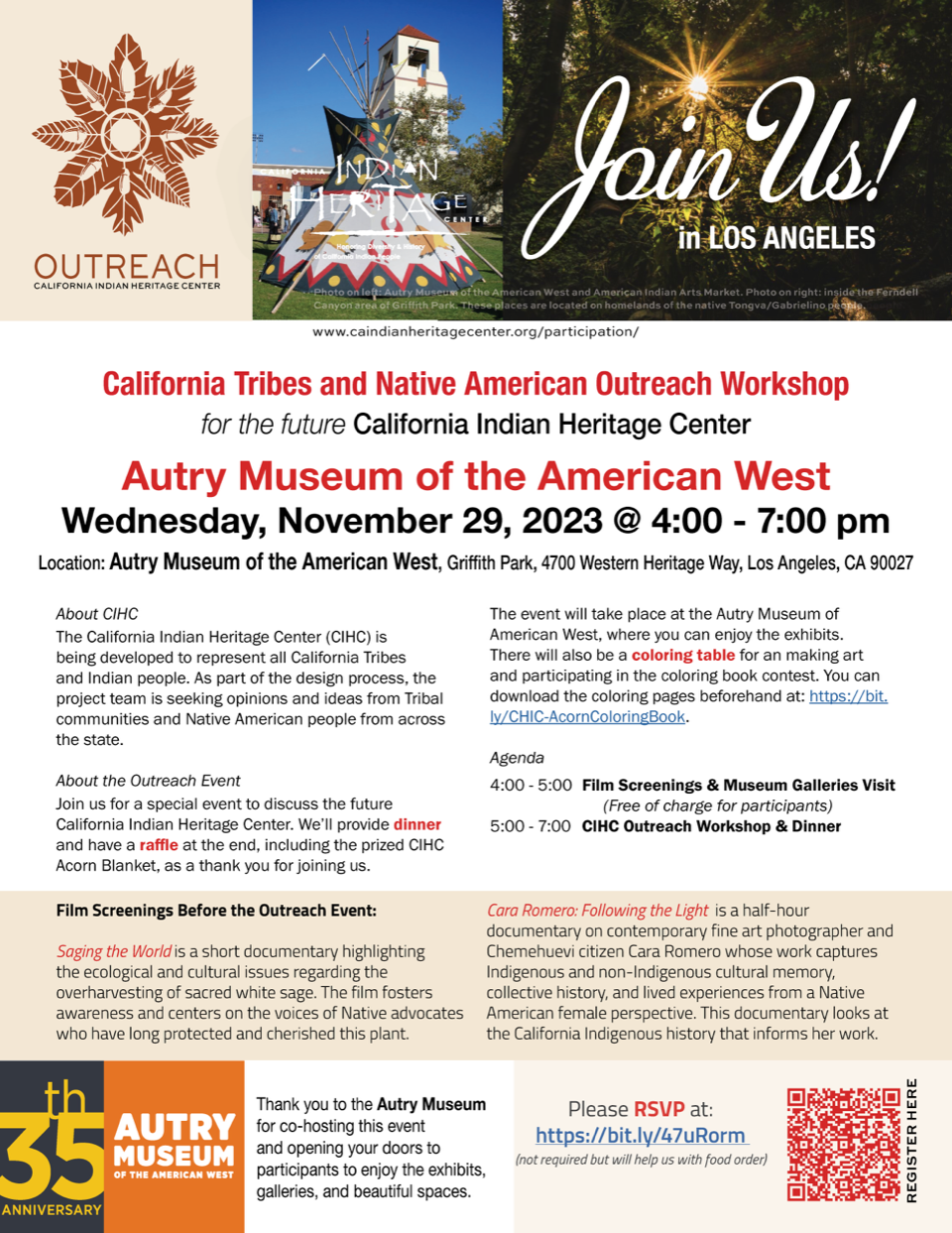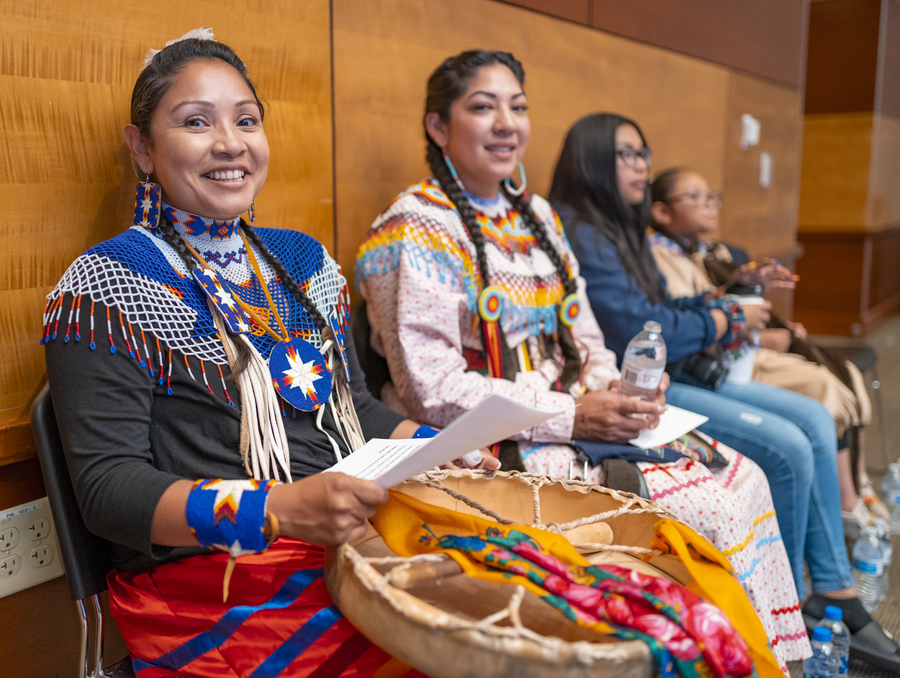
Native American Museum Educational Outreach Programs: Bridging Cultures and Decolonizing Narratives
Native American museum educational outreach programs represent a critical and evolving dimension of contemporary museology. Moving beyond the traditional role of static repositories, these programs actively engage with diverse audiences outside the museum’s physical walls, aiming to foster a more accurate, nuanced, and respectful understanding of Indigenous cultures, histories, and contemporary experiences. This article delves into the multifaceted nature of these initiatives, exploring their historical context, core objectives, diverse methodologies, guiding principles, and profound impact on education and cultural reconciliation.
I. Introduction: Redefining the Museum’s Role
For centuries, many museums presented Native American cultures through a colonial lens, often depicting Indigenous peoples as relics of the past, devoid of agency or contemporary relevance. However, a significant paradigm shift has occurred, driven by Indigenous advocacy, academic critique, and a broader decolonization movement within cultural institutions. Native American museums, alongside mainstream museums with significant Indigenous collections, have embraced educational outreach as a primary means to rectify historical misrepresentations, promote cultural revitalization, and foster cross-cultural dialogue.
Educational outreach, in this context, encompasses a broad spectrum of activities designed to extend the museum’s interpretive and educational resources to schools, universities, community organizations, and the general public. It is a proactive engagement that seeks to bridge knowledge gaps, challenge stereotypes, and cultivate a deeper appreciation for the rich diversity and enduring resilience of Native American nations. These programs are not merely supplementary; they are foundational to the museum’s mission of cultural preservation, education, and social justice.

II. Historical Context and Evolution
The evolution of Native American museum outreach is intertwined with the broader history of Indigenous self-determination and the critique of colonial museology. Early ethnographic collections often reflected a "salvage anthropology" mindset, presenting Indigenous cultures as vanishing and exotic, collected without proper consent or context. The 1970s and beyond witnessed a powerful movement for Indigenous rights, leading to legislation such as the Native American Graves Protection and Repatriation Act (NAGPRA) of 1990. This legislation, alongside increasing Indigenous leadership within museums, forced institutions to confront their colonial legacies and engage directly with Native communities.
This shift spurred the development of outreach programs that were no longer solely about "educating" non-Native audiences from a detached perspective, but about fostering reciprocal relationships, incorporating Indigenous voices and epistemologies, and supporting Native communities in their own cultural preservation and revitalization efforts. Outreach became a vital tool for decolonizing museum practices, enabling a more accurate, respectful, and community-driven dissemination of knowledge.
III. Core Objectives of Outreach Programs
Native American museum educational outreach programs pursue several interconnected objectives:
- A. Correcting Misconceptions and Challenging Stereotypes: A primary goal is to dismantle pervasive stereotypes—from the "noble savage" to the "bloodthirsty warrior"—and correct historical inaccuracies that often dominate mainstream narratives. Programs provide evidence-based information to counter simplistic portrayals and reveal the complexity, diversity, and modernity of Indigenous societies.
- B. Promoting Accurate Historical and Contemporary Narratives: Outreach aims to present comprehensive histories, including pre-colonial ingenuity, the impacts of colonization, ongoing struggles for sovereignty, and the vibrant contemporary lives of Native peoples. This includes showcasing Indigenous perspectives on historical events and highlighting the contributions of Native individuals and nations.
- C. Fostering Cultural Appreciation and Empathy: By engaging audiences with authentic cultural expressions, art forms, languages, and philosophies, these programs cultivate empathy and respect. They encourage participants to see Indigenous cultures as living, dynamic traditions worthy of recognition and celebration.
- D. Supporting Native Cultural Revitalization and Language Preservation: Many outreach initiatives are designed in collaboration with Native communities to support their own cultural goals. This might involve language immersion programs, traditional arts workshops, or sharing ancestral knowledge with younger generations, thereby strengthening cultural identity and continuity.
- E. Enhancing K-12 and Higher Education Curricula: Outreach programs provide invaluable resources for educators, helping them integrate accurate and culturally sensitive Native American content into their lessons. This addresses a significant gap in many standard curricula, ensuring that students receive a more holistic and truthful education.
- F. Building Community Relationships and Engagement: Outreach fosters genuine partnerships between museums and Native communities, transforming institutions into trusted allies and platforms for Indigenous self-representation. It also engages non-Native communities, promoting dialogue and mutual understanding.

IV. Diverse Modalities and Program Types
To achieve these objectives, Native American museums employ a wide array of outreach modalities:
- A. Traveling Exhibitions and Artifact Kits: Museums develop portable exhibitions or curated kits containing authentic artifacts (or high-quality replicas), photographs, and interpretive materials. These are lent to schools, libraries, and community centers, allowing audiences to engage directly with material culture and gain hands-on learning experiences.
- B. Virtual and Digital Learning Platforms: Leveraging technology, museums offer virtual tours, online curricula, webinars, digital archives, and interactive websites. These resources transcend geographical barriers, making Indigenous knowledge accessible to a global audience and particularly vital in remote or under-resourced areas.
- C. Teacher Professional Development and Curriculum Integration Workshops: Recognizing the critical role of educators, museums host workshops that equip teachers with accurate content, pedagogical strategies, and culturally appropriate resources for teaching Native American history and culture. These often include lesson plans, primary sources, and guest speakers.
- D. Guest Speaker Programs and Elder Consultations: Bringing Indigenous elders, scholars, artists, and community leaders directly into classrooms and public forums provides authentic voices and lived experiences. These direct interactions are profoundly impactful, offering perspectives that cannot be replicated by textbooks alone.
- E. Community Workshops and Cultural Demonstrations: Museums host or facilitate workshops in traditional arts (e.g., basket weaving, beadwork, storytelling, dance), often led by Native practitioners. These hands-on experiences offer insight into cultural practices and foster appreciation for Indigenous artistic traditions.
- F. Collaborative Projects with Native Communities: Outreach frequently involves co-curation of exhibitions, joint research projects, or the development of culturally specific educational materials directly with tribal nations. This ensures that programs are relevant, respectful, and align with community priorities.
- G. Resource Development: This includes the creation of comprehensive lesson plans, study guides, bibliographies, digital archives, and multimedia content tailored for various age groups and educational levels, often available for free download.
V. Key Principles and Best Practices
Effective Native American museum educational outreach is guided by a set of ethical and methodological principles:
- A. Indigenous Self-Determination and Collaboration: Programs must be developed with and by Native communities, not just for them. This means involving Indigenous elders, cultural specialists, and tribal representatives in all stages of program design, content creation, and delivery. Co-curation and co-authorship are paramount.
- B. Authenticity and Accuracy: All information and representations must be rigorously accurate, reflecting the diverse perspectives and historical truths of Native nations. This requires thorough research, verification by community members, and an ongoing commitment to updating content as new scholarship and community insights emerge.
- C. Cultural Sensitivity and Respect: Programs must demonstrate profound respect for Indigenous spiritual beliefs, cultural protocols, and intellectual property. This includes understanding and adhering to local customs, avoiding the commodification of sacred knowledge, and acknowledging the sovereignty of Native nations.
- D. Inclusivity and Accessibility: Programs should be designed to be accessible to a wide range of audiences, considering different learning styles, linguistic needs, and physical abilities. This also involves reaching underserved communities and those geographically distant from the museum.
- E. Decolonization of Narratives and Practices: Outreach actively challenges colonial frameworks, centering Indigenous voices, epistemologies, and worldviews. It moves beyond simply adding Indigenous content to existing curricula, aiming instead to transform foundational understandings of history, culture, and power.
VI. Impact and Future Directions
The impact of Native American museum educational outreach is profound and far-reaching. It leads to increased knowledge and understanding among non-Native audiences, fostering empathy, challenging prejudice, and promoting critical thinking about historical narratives. For Native communities, these programs can bolster cultural pride, aid in language revitalization, and provide platforms for self-representation and sovereignty. Ultimately, they contribute to a more informed citizenry capable of engaging with complex issues related to Indigenous rights, environmental justice, and social equity.
Despite significant progress, challenges remain. Sustainable funding for these labor-intensive programs is an ongoing concern. Bridging the digital divide to ensure equitable access to virtual resources is crucial. Furthermore, the work of decolonization is continuous, requiring ongoing self-reflection, adaptation, and deeper engagement with Native communities.
Future directions for outreach will likely include an increased emphasis on digital storytelling, immersive virtual experiences, and interactive platforms. There will be a growing focus on addressing contemporary issues, such as climate change (from Indigenous perspectives), food sovereignty, and the MMIWG (Missing and Murdered Indigenous Women and Girls) crisis. The commitment to building long-term, reciprocal relationships with Native nations will continue to be the cornerstone of effective and ethical outreach.
VII. Conclusion
Native American museum educational outreach programs are indispensable tools for cultural education, reconciliation, and social transformation. By proactively extending their resources and expertise, museums are not only disseminating vital knowledge but also actively participating in the decolonization of historical narratives and fostering a more equitable and understanding society. Through their diverse methodologies, unwavering commitment to ethical principles, and profound impact, these programs stand as beacons of cultural understanding, bridging divides and illuminating the enduring richness and resilience of Indigenous peoples.


